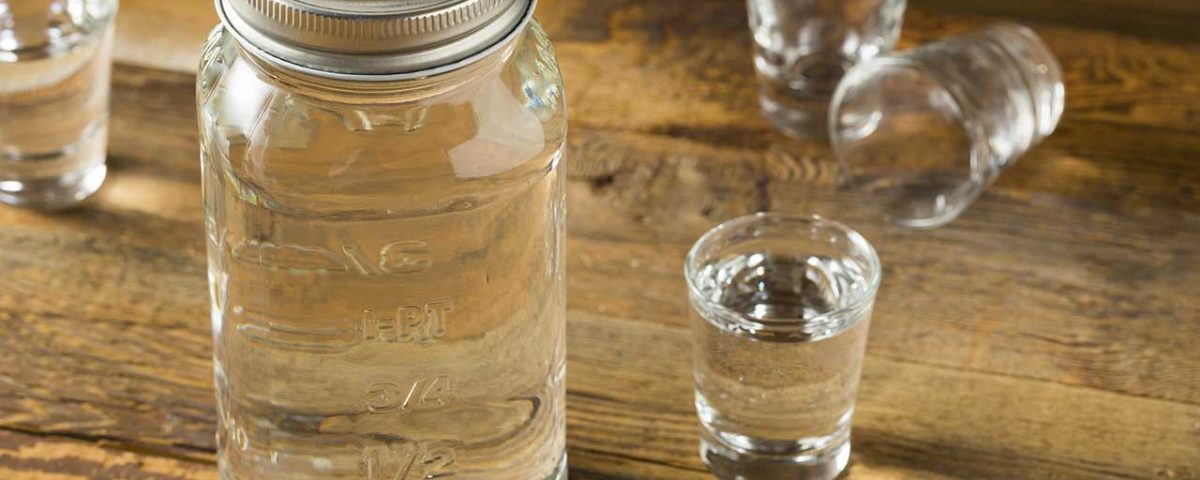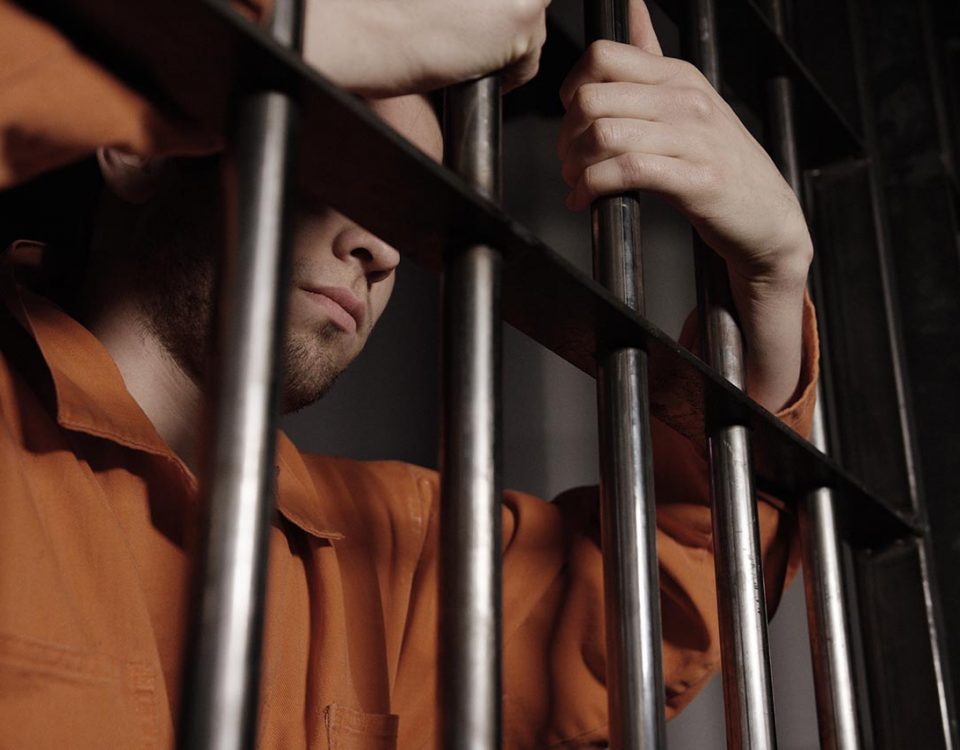Moonshine is a high-proof liquor that’s produced illegally. The name “moonshine” was derived from the tradition of making the drink at nighttime to avoid legal detection. Although the making of moonshine used to be a hush-hush operation, commercial producers have recently labeled their products as “moonshine” to attract customers. The first legal moonshine distillery in Tennessee was established in 2010, followed by others in Alabama, Georgia, Kentucky, Alabama, Georgia, and South Carolina. Despite its now semi-legal status, there are many dangers of moonshine you should know about before trying it out for yourself.
What Is “Moonshine” Alcohol?
Also known as “hooch” or “homebrew,” moonshine is an alcoholic drink that’s made by fermenting a sugar source. Traditionally, moonshine is made from a mash of corn and sugar. Then the alcohol is separated from the mash in a distillation process.
A major difference between moonshine and other liquors like whiskey and bourbon is that moonshine is not aged. Certain alcohols, such as brandy and whiskey, are aged in barrels for certain periods to remove the harsh flavors of raw alcohol while adding distinct flavors found in the barrel’s wood. In addition to a raw taste, moonshine not being aged also means that it’s a distilled spirit that contains a high percentage of alcohol, usually more than 100 proof (50% of alcohol) as with white whiskey.
When people think of moonshine, they may think of the stereotypical image of “country folk” in overalls distilling and transporting jugs of moonshine labeled “XXX” during the middle of the night. And while this still holds in certain states, moonshine is now available commercially on the internet.
This may have taken some of the danger from producing and selling the stuff in person, but moonshine still isn’t safe. Additionally, plenty of moonshine is still brewed in millions of stills across the country made from car radiator parts and other materials.
Moonshine in the U.S.
Moonshine started as a major financial source of the Appalachian economy, allowing impoverished citizens a source of income during tough times. Like any good produced in the U.S., moonshine’s supply and demand fluctuates frequently, and the drink experienced a major downfall when the U.S. increased the price of sugar in the 1950s.1
The spirit seemed to fade into the background as marijuana and prescription painkiller use seemed to increase at epidemic levels in the nation. In recent years, however, moonshine has had a resurgence, and it seems like many stores offer the drink. Also, due to higher liquor store prices, moonshining has regained its status.
In 2010, a BBC investigation on moonshining in the U.S. found that around a million Americans were engaging in illegal moonshining. In the same year, Tennessee started selling legal hooch in big boxes at basic stores like Walmart and Sam’s Club.2
Nowadays, certain forms of moonshine can be purchased legally at stores like Ole Smoky Moonshine in Tennessee. Illegal moonshining is still an issue in the U.S., but the internet has become a new place for the moonshine market. Several websites sell stills made of all copper for sale, ranging from 1 gallon to 220 gallons, ranging in price from $150 to $11,000.
Again, illegal moonshining is still an ongoing problem, despite the various negative effects of moonshine consumption. And even if you purchase this drink at a store, it doesn’t make it any safer.
What Are the Dangers of Moonshine?
Moonshine is dangerous in both the distilling process and when it’s consumed.
Distilling Moonshine
Moonshine is distilled by separating the alcohol by evaporating it from a fermented mixture of corn and sugar mash at a high temperature. The steam from the process is then collected and condensed back into a liquid alcohol form. Distilling moonshine is dangerous because of methanol.
Methanol, or methyl alcohol, is a byproduct of the distilling produce and is released in the vapors during evaporation. To give you an idea of how flammable and dangerous this chemical is, methanol is a primary main ingredient in fuel, pesticides, paint thinners, and more.
The vapors that are released during distillation are also highly flammable, which is why most if not all moonshine distilleries are located outside. Despite the increased risk of legal detection, the threat of vaporous explosions and fires is too great when the process is conducted indoors.
Additionally, because moonshine distillery machines are often made from car parts and other dangerous materials, the risk of explosion is great if something isn’t properly sealed or vented. If there’s an ethanol gas leak, for instance, a single spark could cause an explosion. Without proper ventilation, a tank that’s boiling the alcohol from fermented ingredients can buckle.
Methanol Risks
While the flammability of the moonshine distillation process is dangerous in and of itself, the health effects of moonshine-methanol consumption pose an even bigger threat. More people have died from drinking moonshine than by any explosions at stills, despite the few old and handmade stills that are left.
A major risk of drinking moonshine is methanol blindness. Detecting methanol upon the first step is impossible, and consuming more of it will simply get the person drunker. However, it’s eventually metabolized as its toxic metabolite, formic acid, in the body, which can have an extremely harmful effect.
Just 10 milliliters (ml) of methanol is all it takes to cause permanent optic and partial nerve damage, if not complete blindness. As little as 30 ml of methanol is lethal, and, for reference, a standard shot glass in the U.S. holds 40 ml.
Old stills use car radiators during the distilling process, which often contain lead soldering and remnants of antifreeze glycol products that could contaminate and add toxins to the moonshine.
Larger batches of moonshine are more likely to contain methanol. Because methanol is vaporized or evaporated at a lower temperature than alcohol, the first liquid produced by the distillation process usually contains methanol.
While moonshiners have adopted new ways to discard methanol, some moonshiners will actually add it back into the batch to make the drink more potent. However, because these processes aren’t regulated, there’s no way of knowing whether the illicit alcohol actually contains any methanol.
Effects of Drinking Moonshine
In addition to the risk of consuming methanol when drinking moonshine, because moonshine contains some of the highest alcohol levels of any drink, the usual side effects of alcohol are amplified.
Common moonshine side effects include:
- Sedation
- Drowsiness
- Confusion
- Impaired judgment
- Difficulty thinking or concentrating
- Blacking out
- Nausea and vomiting
- Aggressive behavior
- Slurred speech
- Comatose-like behavior
- Alcohol poisoning
Help for Alcoholism
The dangers of moonshine are numerous. Whether you purchase the drink from a legal or illegal source, the cons of moonshine outweigh any supposed benefits. For instance, the quicker and more frequently you drink alcohol, the quicker you’ll develop a dependence on it, one that could easily spiral out of control.
If you or a loved one has gotten to this point, let our Palm Springs, California drug rehab help. With medically-assisted alcohol detox and treatment programs, clients receive 24-hour care as they withdraw from alcohol, during which they may receive medication to mitigate withdrawal symptoms. Not only is this the safest way to detox from alcohol, but it also reduces the risk of relapse.
Our alcohol addiction treatment also incorporates individual and group therapy to help patients recover from the psychological aspect of addiction. No matter how out of control your drinking has gotten, we can help.
Call Banyan Treatment Center Palm Springs today at 888-280-4763 for more information about our California drug treatment programs.
Sources:
1. Appalachian State University - It's All Legal Until You Get Caught: Moonshining in the Southern Appalachians
2. BBC News - Moonshine 'tempts new generation'
Related Reading:
Impact of Alcohol on Mental Health
Why Does Alcohol Make Me Angry?









